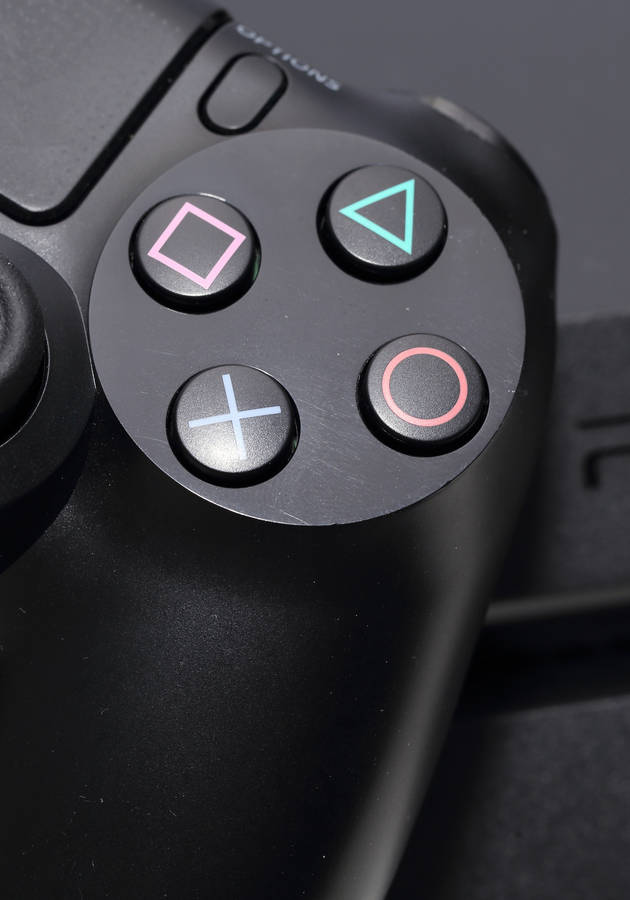Today the global video game market is valued at nearly $100 billion. Consequently, it’s not at all surprising that it is fairly easy to find, buy, and play the video game of your choice: you don’t even have to get up from your chair to do that.
Blake J. Harris’ exceptional nonfiction novel, “Console Wars,” takes us back in time to a simpler era when the video game market was worth 30 times less than it is today – and when a Japanese powerhouse called Nintendo controlled 90% of it.
Care for a little nostalgia? Then, get ready to hear all about how Sega, another company from the Land of the Rising Sun, challenged Nintendo’s dominance during the 1990s in the United States – and how it missed an opportunity to become a household name with newer generations as well.
Nintendo’s video game supremacy in the 1990s
Just three decades ago, 9 out of 10 game consoles in the U.S. were made by Nintendo, arguably the most influential company in the history of the video game industry. Several factors contributed to Nintendo’s dominance.
We can sum up the first one in two words that will probably strike a chord with die-hard gamers as long as video games are a thing: Super Mario. First released in 1985 for the Nintendo Entertainment System (NES), the game was a huge hit and inspired a franchise that encompasses (to this day) one of the Top 3 best-selling video game series in history.
Nowadays, you can play Super Mario online, but back in the 1990s, if you wanted to play Super Mario, you could only play it on consoles produced by Nintendo. So, they were the only ones people bought. Sooner or later, video game developers realized that if they wanted to stay afloat, their best bet was to start developing their games exclusively for Nintendo’s consoles.
Nintendo, of course, smartly used this opportunity to make some money even out of the games that the company itself didn’t produce by practically forcing video game developers to buy their specialized game cartridges – for $10 each. That way, Nintendo didn’t even care whether a third-party Nintendo video game would end up being a flop or a hit: the company collected huge profits either way. These were, obviously, substantial in the case of successful video game franchises such as Capcom’s Street Fighter.
And because Nintendo was practically a monopoly at the beginning of the 1990s, they started making money out of their own mistakes as well! Namely, when they updated their 8-bit NES into the 16-bit SNES (Super Nintendo Entertainment System) for the U.S. market in 1991, the console turned out to be incompatible with older games, obliging new owners to buy their favorite games for the second time. Of course, most of them were not happy. However, who knows if Nintendo’s dominance would have been ever shaken if the American branch of another Japanese video game company called Sega hadn’t just recruited a former CEO of Mattel by the name of Tom Kalinske.
The story of Tom Kalinske and a revelation at a geisha bar
Kalinske started working at Mattel when he was just 28 years old, in 1972. About 13 years later, after successfully reviving the Barbie & Hot Wheels brands and launching the He-Man series, he was promoted to CEO. Just three years later, fed up with the game of office politics, he stepped down from this position to become president of a competitor, Universal Matchbox.
By 1990, under his guidance, the company managed to turn a profit for the first time in years. But then, after a close encounter with illegal manufacturers of Matchbox cars in Spain, Kalinske called it quits and – after months of depression and seclusion – in July of that year, he took his family on vacation to Hawaii. It was there that he was visited by an old friend from his Mattel days, Hayao Nakayama – then-CEO of a small video game company called Sega Enterprises.
It was not a chance encounter: after hearing that Kalinske was jobless, Nakayama spent months looking for him so that he could offer the job of CEO of Sega of America. Initially reluctant, Kalinske eventually agreed to fly out to Japan, where Nakayama presented to him several video game products developed by Sega, including the company’s response to Nintendo’s SNES – the Sega Genesis – and, while drinking at a geisha bar, the Game Gear – a handheld portable system similar to Nintendo’s Game Boy.
And it was then that the magic happened. Before the geisha waitress could fix Kalinske a drink, she suddenly became transfixed by the Game Gear. “What is this?” she asked him, as the world of Kalinske immediately shrunk around him. “Well, would you look at that,” he mused, “while having a revelation that would shape Sega, the video game industry, and the face of entertainment as a whole. Video games weren’t just for kids; they were for anyone who wanted to feel like a kid. Anyone who missed the freedom and innocence that comes with endless wonder. Video games were for everyone; they just didn’t realize it yet.” And Kalinske was about to change that.
The 4-point plan that started the unlikely Sega revolution
However, the very first day that he visited the American branch of Sega (Sega of America, SOA for short), Kalinske realized that this could be his biggest challenge yet: his predecessor, Michael Katz, had left the company in complete disarray, driving it to near-bankruptcy by making all the wrong decisions.
For starters, he had overspent on widely unpopular games such as James ’Buster’ Douglas Knockout Boxing. At the same time, he didn’t even bother to source better third-party games for Sega consoles, casually allowing Nintendo to pen exclusive contracts with the best video game developers in the industry. As a consequence, Sega Genesis didn’t sell well at all – not even half of what was needed to keep SOA afloat according to estimates from Japan. Finally, even if he hadn’t been the impetus, Katz had tolerated a poisonous, finger-pointing work environment for years.
It was from there that Kalinske started to turn things around. After openly declaring his trust for an enigmatic employer named Shinobu Toyoda – whom everybody at SOA deemed a spy for the parent company, Sega of Japan ( SOJ) – he encouraged everybody to do the same. He needed unity to make a difference, and he needed it immediately.
Once that he could feel the quivering of that ephemeral and gentle thing called team spirit inside SOA’s offices, Kalinske presented SOJ with a 4-point plan that he believed would boost the sales of Genesis and institute a video game revolution. First of all, he asked the price of the console to be cut. Then, he asked for a U.S.-based team who would develop Sega-specific games exclusively for the American market. Third, he asked for some extra money to start aggressive advertising campaigns. And, last but not least, he asked the bundled game for the Sega Genesis (called Altered Beast) to be replaced with a new, then little-known, game: Sonic the Hedgehog.
Deeming all four points a little short of crazy, SOJ refused Kalinske’s demands as soon as they received them. Fortunately, Nakayama overruled them: “I hired you to make the decisions for the Americas,” he said to Kalinske, “so go ahead and do it.’ And the green light was all that Kalinske needed. After the positive reception of Sonic at the 1991 Summer Consumer Electronics Show, everybody started buying the Genesis, and, by the end of the year, Sega’s game console managed to outsell the SNES in the United States! It was the first time in a decade that Nintendo lost its dominance in the home console market.
“Mortal Kombat” and the birth of the video game ratings system
The victory was not merely literal: it had some symbolic significance as well. You see, Nintendo’s mascot, Mario, was a sluggish, family-friendly Italian plumber with a mustache. Via the game bundled with Genesis, Sega got as its mascot something much more dynamic: an unruly, edgy, fast-moving blue hedgehog aptly named Sonic.
Kalinske realized that SOA should set up its marketing strategy upon this almost accidental dichotomy: the more Sega presented itself as the new thing on the market – made for adults and for the future – the more Nintendo would look as something outdated in the eyes of prospective customers, and the SNES would earn a reputation as a video console for youngsters and children. Just as soon as they had agreed upon doing something like this, Sega got an opportunity to show its determination in practice.
In 1992, Midway Games released Mortal Kombat, a fantasy-themed fighting game that quickly earned a notorious reputation for its high levels of violent content. After a public outcry, Nintendo – true to its image – chose to accept only a censored, less-realistic version from the developers in which, for example, the fighters’ blood color was a bland gray.
Seeing an opportunity to cement its reputation as a game changer, SOA chose a different strategy. First, in response to Mortal Kombat-related criticisms, they asked the Motion Picture Association of America (MPAA) to rate video games. After the MPAA turned down Sega’s offer, SOA created the Video game Ratings Council (VRC) as a new governing body to rate and review all game content. With the help of psychologists, the VRC came up with a 3-tiered rating system for video games – the first one of its kind in history. In reality, its existence served a somewhat more sinister purpose: it allowed Sega to release a more violent version of Mortal Kombat while simultaneously addressing the issue with the game’s content.
Amazingly, Kalinske and his team went a step further: they even avoided the MA-17 (only adults) tag! “How,” you ask? Well, by inventing arguably the first noteworthy cheat code in history: the blood code. As you might have guessed, the blood code for Mortal Kombat was nothing but a combination of buttons that, upon entering, significantly changed the gameplay. That way, gamers could buy MA-13 video game without any of the over-the-top gore and violence; and then, in the secrecy of their rooms, they could transform it to look just the way it had been banned by censors.
The demise of Sega: or, how the Sony PlayStation was born
Despite all this success of SOA, SOJ never stopped playing its own games. And, surprisingly, after developing a new, 32-bit console, the Sega Saturn – despite Kalinske’s protests – they discontinued support for the still sought-after 16-bit Sega Genesis. At the same time – unwilling to lose control over the production processes – they refused to listen to Kalinske’s advice and partnered with another Japanese conglomerate, Sony, which was pretty keen to enter the video game market as a software developer. All Sega needed to do was to develop proper hardware – that is, a new console – compatible with Sony’s software solutions.
Deeming this project wasteful, SOJ turned down Sony’s offer. And when that happened, Sony realized that the only way for them to enter the video game market with their software was by developing the hardware as well. So, they decided to give this a try and started working on a new state-of-the-art game console. Soon enough, they came up with something otherworldly: the Sony PlayStation.
Meanwhile, the expensive Sega Saturn – largely in part to a failure to bundle it with a new game in the Sonic the Hedgehog series – turned out to be a commercial flop. Realizing that once Nintendo released their new console, the Nintendo 64, the Saturn would become completely obsolete, Kalinske and a few members of his team decided to resign from SOA. SOJ tried to regroup by discontinuing the Saturn and releasing the Sega Dreamcast – the first game console to have a modem for online play and internet support – but once Sony announced the release of the PlayStation 2, the Dreamcast was discontinued as well.
It ended up being the last home console produced by Sega which, after a change in leadership, restructured itself as a third-party video game developer and publisher. Once lauded for its creativity and innovations, it now produces games – mostly successful, it must be said – for the game consoles of its one-time rival and possible partner: Sony.
Final Notes
Named “Best Book of the Year” by NPR, Slate and Publishers Weekly back in 2015, “Console Wars” is fast-paced, exciting, accessible, and unputdownable – even if you haven’t grown up with Mario and Sonic.
If you have, then it’s a must-read.
Trust us.
12min Tip
When SOA’s global marketing director Al Nilsen visited Japan, his superiors invited him to a restaurant and ordered him fugu – a fish that, if not prepared properly, is lethally poisonous. Nilsen tried it; his Japanese superiors didn’t. This vivid anecdote sums up the difference between SOA and SOJ: only the former were willing to take risks. Follow their footsteps: the biggest risk, after all, might be not taking any.





























